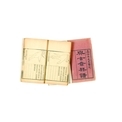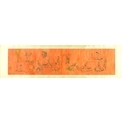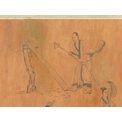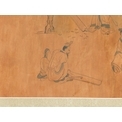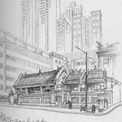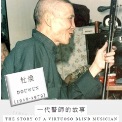-
History & Society
- Education in Pre-war Hong Kong
- History of Taikoo Sugar Refinery
- Hong Kong Products Exhibition
- Local Festivals Around the Year
- Post-war Industries
- Pre-war Industry
- The Hong Kong Jockey Club Archives
- Tin Hau Festival
- Memories We Share: Hong Kong in the 1960s and 1970s
- History in Miniature: The 150th Anniversary of Stamp Issuance in Hong Kong
- A Partnership with the People: KAAA and Post-war Agricultural Hong Kong
- The Oral Legacies (I) - Intangible Cultural Heritage of Hong Kong
- Hong Kong Currency
- Hong Kong, Benevolent City: Tung Wah and the Growth of Chinese Communities
- The Oral Legacies Series II: the Representative List of the Intangible Cultural Heritage of Hong Kong
- Braving the Storm: Hong Kong under Japanese Occupation
- A Century of Fashion: Hong Kong Cheongsam Story
Geography & EnvironmentArt & Culture- Calendar Posters of Kwan Wai-nung
- Festival of Hong Kong
- Ho Sau: Poetic Photography of Daily Life
- Hong Kong Cemetery
- Sketches by Kong Kai-ming
- The Culture of Bamboo Scaffolding
- The Legend of Silk and Wood: A Hong Kong Qin Story
- Journeys of Leung Ping Kwan
- From Soya Bean Milk To Pu'er Tea
- Applauding Hong Kong Pop Legend: Roman Tam
- 他 FASHION 傳奇 EDDIE LAU 她 IMAGE 百變 劉培基
- A Eulogy of Hong Kong Landscape in Painting: The Art of Huang Bore
- Imprint of the Heart: Artistic Journey of Huang Xinbo
- Porcelain and Painting
- A Voice for the Ages, a Master of his Art – A Tribute to Lam Kar Sing
- Memories of Renowned Lyricist: Richard Lam Chun Keung's Manuscripts
- Seal Carving in Lingnan
- Literary Giant - Jin Yong and Louis Cha
-
History & SocietyGeography & EnvironmentArt & Culture
-
View Oral History RecordsFeatured StoriesAbout Hong Kong Voices
-
Hong Kong Memory
Art of Qin Making
A wealth of experience has been accumulated by dozens of generations of qin makers in the many stages of the instrument’s production including material selection, styling, lacquering, shaping, and hollowing. The following verse appears in the Ding Zhi Fang Zhong in Yongfeng (Odes of Yong) in Shijing (The Book of Poetry): “He planted about it hazel and chestnut trees; The yi, the tong, the zi, and lacquer trees; As they might afford materials for qin and se when cut down.” This record shows that the use of timber of different hardness from tong (Chinese parasol), zi (Chinese catalpa) and other trees for the making of qin top and bottom boards was already a well-known fact at the time. Indeed, qin making methods have been successfully transmitted over the generations to this day. There has been no lack of famous qin makers and their creations through the ages. According to folklore, Cai Yong (c.133-192) of the Eastern Han Dynasty (25-220) had already used a piece of scorched wood to create the Jiaowei (Scorched Tail) qin. The Lei family of Sichuan was renowned for their qin making during the Tang Dynasty (618-907), when Lei Wei being the most distinguished qin maker of the time. A Lei qin is regarded by qin lovers as a rare jewel of qins.
Various methods for qin making have been recorded in many ancient sources. The Yuguzhai Qinpu (Yuguzhai Qin Handbook), written by Zhu Fengjie of the Qing Dynasty (1644-1911), is particularly detailed. Zhuoqintu (Illustration of Qin Making) by Gu Kaizhi (c.344-405) from the Eastern Jin Dynasty (317-420), on the other hand, records the steps of the ancient craft with illustrations.
Photos
Copyright © 2012 Hong Kong Memory. All rights reserved.






